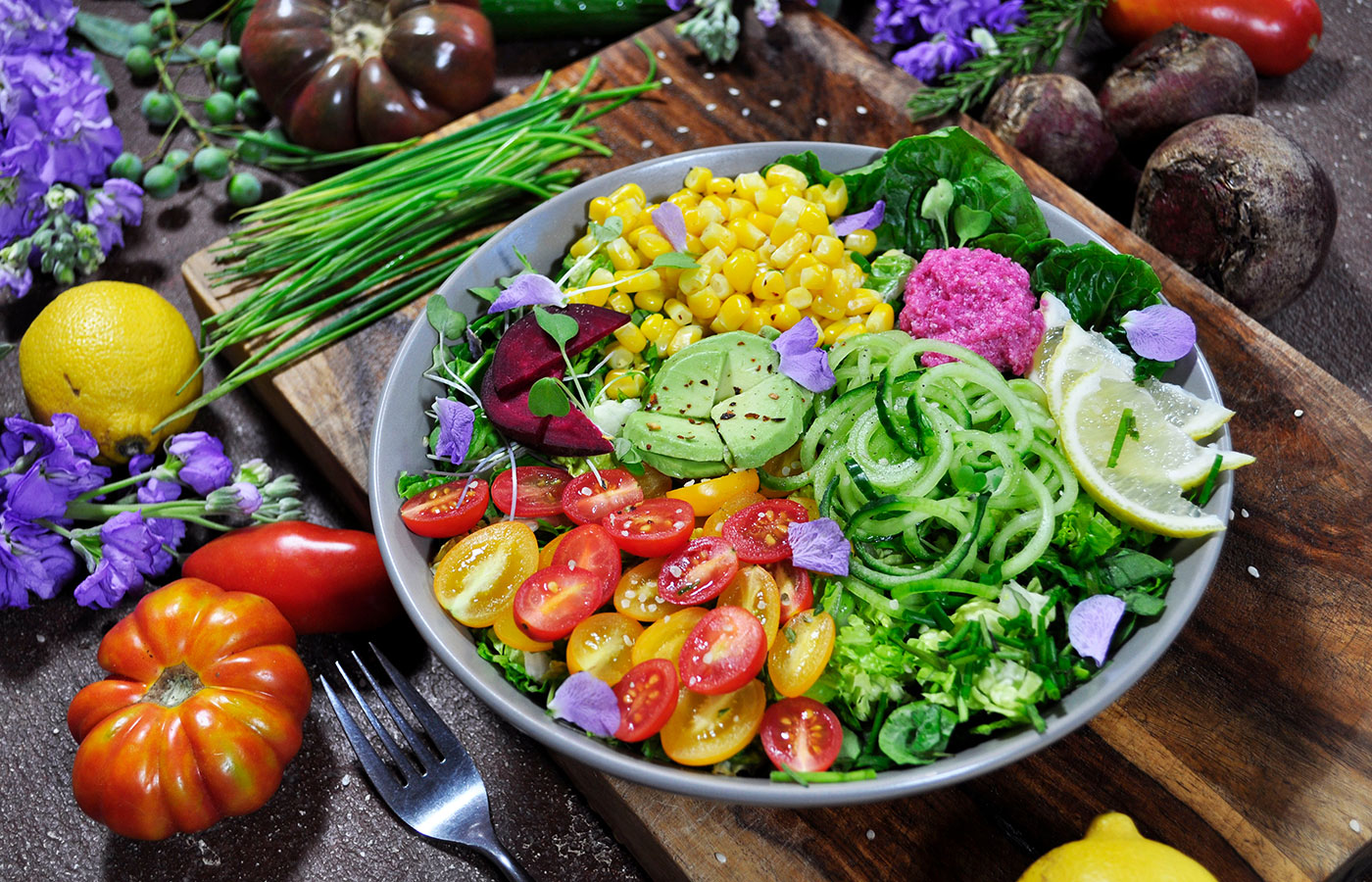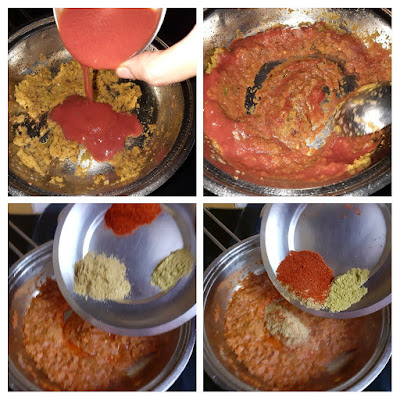Here's the recipe for Mixed Vegetable Curry.
PREP TIME: 15Mins COOK TIME: 15 Mins
TOTAL TIME: 30Mins COURSE: MAIN
CUISINE: NORTH INDIAN SERVINGS: 4
AUTHOR: Rajni Ram
Ingredients:
Cauliflower 10-15 florets
Carrot 1 diced
Potato 1 large or 2 small
Capsicum 1 medium diced and seeds removed
Beans 10 approx cut into 1/2 inch pieces
Tomatoes 4 ( 2 chopped & 2 pureed)
Peas shelled( fresh/frozen) 50 gm
Fresh cream 1.5 cups
Salt as per taste
Cumin seeds 1tsp
Red chilli powder 1 tsp
Turmeric powder 1tsp
Fennel/saunf powder
Coriander powder 1 tsp
Garam Masala powder 1/2 tsp
Oil for sauteeing
Directions:
Dice all vegetables and keep ready. Put all the vegetables except Capsicum and tomatoes, in a vessel, pour enough water, salt and turmeric powder and cook. The vegetables should get tender but not turn limp. Switch off flame at this stage and cool the vegetables completely. If any water is remaining drain and keep it aside, it can be used if required later on. Now in a pan heat 1 tbsp oil, add cumin seeds, turmeric powder and put in the diced capsicum and saute on high flame for few minutes. Reduce flame to low and add in the tomatoes. Saute on low flame for a minute. The tomatoes should just get a little tender and not break and release the juice. Now add in the tomato puree and all the dry spice powders and cook for 3 minutes on medium flame. Put in the boiled vegetables now(after draining the water) and cook for another 3 minutes. Ensure that not much water is remaining in the pan, if there is, then drain out some or else the subji will turn too watery. Now pour the fresh cream into the pan and immediately turn off the flame. Once the cream is added the flame should not be on, or the gravy will thin out completely. Stir nicely, add the garam masala powder and garnish with chopped coriander leaves and the Mixed Veg subji is ready to be served with Rotis or rice. Enjoy. Bon Appetit.
STEPWISE RECIPE FOLLOWS:
1. Assemble all ingredients. Chop and boil all vegetables and puree 2 tomatoes.
2. In a pan take 1 tbsp oil and heat it. Add the cumin seeds and once they splutter, add the turmeric powder and capsicum and saute on high flame for few minutes.
3. Lower the flame and add in the chopped tomatoes and saute on low to medium flame for a minute. The tomatoes should not break and become limp.
4. Now add the tomato puree followed by salt and all the dry spice powders except the garam masala powder, stir nicely and cook for 3 minutes or until the raw smell goes away.
5. Now add the boiled vegetables and cook for another 3 minutes. If there is too much water, drain it. A little water is ok and required.
6. Finally, add the cream and switch off the flame immediately. Add the garam masala powder now and mix. Garnish with coriander leaves. The mixed vegetable curry is ready to serve.
NOTES:
1. Any store-bought fresh cream is good enough for the subji. It need not necessarily be full or medium fat. Low fat cream is fine too.
2. Once the cream is added put off flame right away, or the gravy will thin down and the moisture from the cream will separate, making the subji too runny.
3. Saute the capsicum on high flame so that it doesn't release too much moisture and cooks crisp.
If you tried this recipe and liked it comment below. I would love to hear from you.
































































